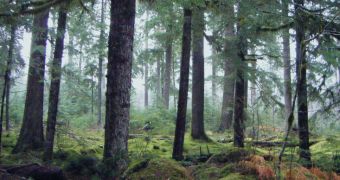While you would expect forests to have a cooling effect on the environment during heatwaves, new research suggests that this is not the case when the extreme atmospheric events set in.
When temperatures start rising at the start of an ensuing heatwave, woodlands are actually a lot slower to cool the air than grasslands, for example. This was recently discovered in a series of studies.
The findings could have important consequences for climate scientists, who can use them to refine existing models that explain weather patterns and forecast the evolution of the climate.
They also bring up a new argument in favor of sustainable forest exploitation practices, and also for reforestation once trees are cut down, experts at Our World report.
Heat waves, also called omega high circulation anomalies, are typical of extreme atmospheric events taking place in Europe, as demonstrated by the hot summers of 2003 and 2006, and by this year's Russian wildfires.
The way croplands, grasslands and forests cool the climate is through the process of evaporation. The new studies show that forests do not put the largest amounts of water vapor in the air, at least not at first.
Experts assumed that to be the case because trees have the deepest root systems of the plant world, which means that they can access a larger reserve of water, and therefore afford to lose more of it.
The study shows that grasslands and croplands tend to cool a lot faster when a heatwave ensues, whereas the opposite is true for forests.
The work was led by ETH Zurich Institute of Atmospheric and Climate Science expert Adriaan Teuling, in collaboration with colleagues at the Wageningen University in the Netherlands.
Details of the investigation appear in the latest issue of the esteemed journal Nature Geoscience.
“Our aim was to find out the extent to which the available solar energy is converted into heating of the atmosphere or respectively moisture evaporation during heatwaves,” adds Sonia Seneviratne, who helped co-design the study.
She also holds an appointment as a professor at ETH Zurich. The expert explains that, due to their counter-intuitive behavior, forests can sustain constant evapotranspiration rates over longer periods of time.
The team says that more studies are now needed to sort out precisely how the forests respond to climate changes in their surroundings, and what mechanisms are responsible for this trait.

 14 DAY TRIAL //
14 DAY TRIAL //